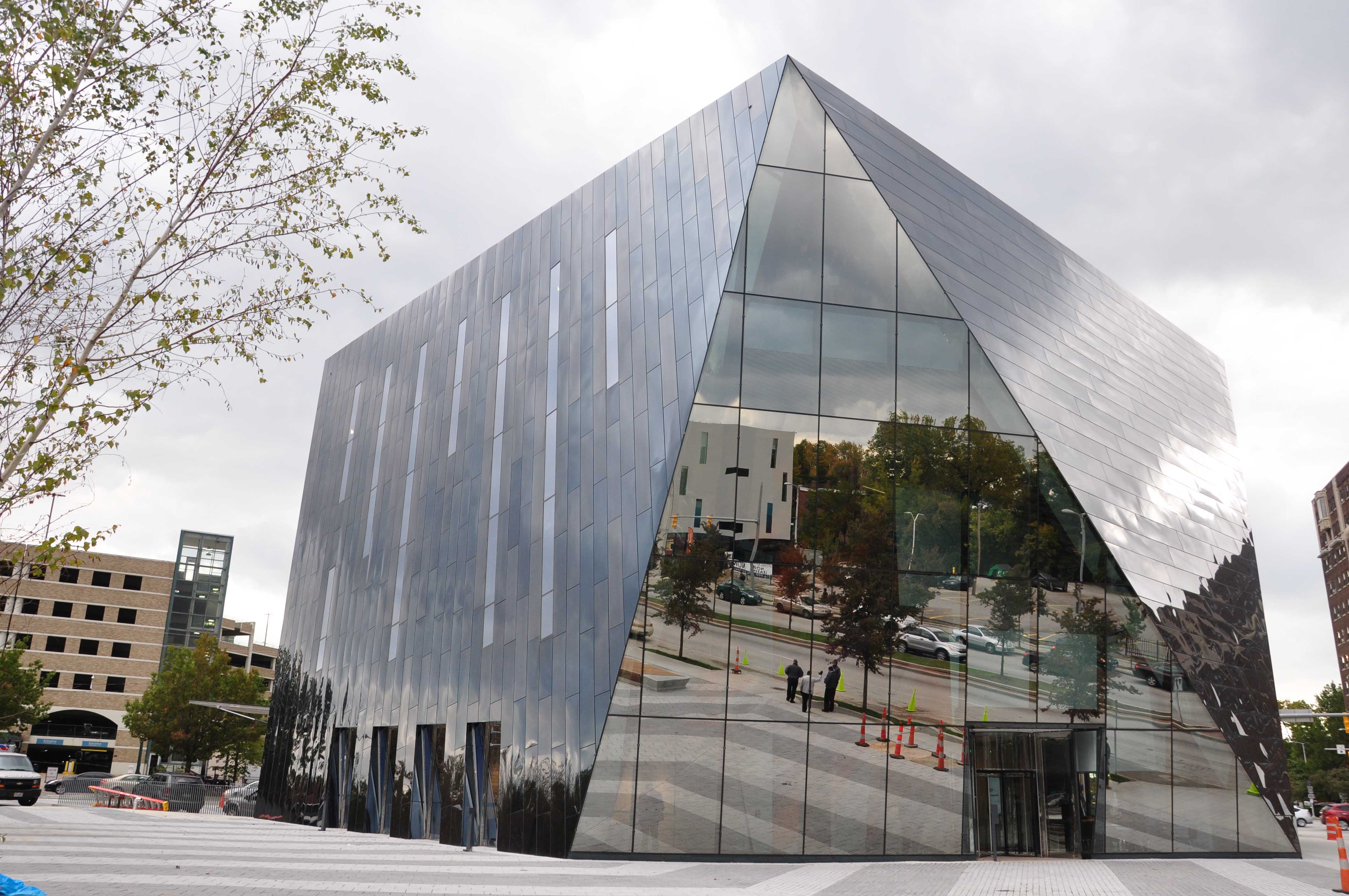For those that have been here for a few years, you will remember what the corner of Euclid and Mayfield looked like – littered with bland architecture, hard to recognize and beyond any semblance of utilizable space. Slowly, Uptown began to be dismantled as we stood and watched a functionless property raised into the now newly constructed space that has provided us with a new supermarket, Constantinos, a new bookstore, more restaurants with the hope of adding even further, and of course, the transferred Museum of Contemporary Art (MOCA) spearheading the project, further adding to the already rich cultural environment.
Prior to its move, MOCA was located on East 63 Street and Carnegie, a smudge in the distance of our periphery to be left without recognition. Walking inside provided a look into the contemporary art world with consistent gallery rotations of well-known artists, each with significant works to share. With its opening, MOCA prepared an exhibition to introduce itself to the neighborhood by creating an inventive comparison between selected works with the erection of the new structure: Inside Out and From the Ground Up running from Oct. 8 until Feb. 24 featuring work by 16 artists.
Watching it built, I felt a curiosity flow over me pondering on how the interior would look. How space would be treated, how the stairs would interact and how much art could they fit inside. As soon as I entered, my expectations were exceeded and that fear that comes with suspense was cooled away. Scaling the stairs, while observing the orchestration of landings that connect the stairs like a spinal cord, they lead up to Lewis Gallery on the second floor. It sits in a cave-like atmosphere, protected like a heart. Inside was a piece by David Altmejd tilted, “The Orbit” (2012).
At first, it was overwhelming; the sculpture nearly takes up the entire space and welcomes interaction through the play of mirrors and a seemingly unlimited potential of gazes. Sensations sporadically connect with attempts to organize fleeting images into a cohesive whole. One could spend hours mesmerized by its intricacies, but there is much more to be seen in the next gallery.
Heading back to the stairs after staying in the enclosed space for far too long provided further appreciation as they carried me up to the fourth floor where the main gallery is located. I decided to continue up one more flight, where you are given a low angle appreciation of the gallery space. In a way, this perch over the gallery serves as both a starting point to prepare yourself and an ending point to synthesize the experience.
Immediately, what catches my eye is Henrique Oliveira’s “Carambóxido”(2012), a massive seed structure extending out of the gallery wall as if a tree was hidden in the walls beyond our sight. I continue to look around: a film by David Hammons is playing in the Cohen Gallery, an employee of the gallery is walking around in one of Haeque Yang’s “Dress Vehicles” – an assortment of window blinds arranged to form an octagon on wheels – as well as Louise Borgeois’ “Peaux de Lapins” (2006) (Rabbit Skins), where pieces hang in a circular shaped cage.
Together, the pieces raise awareness of spaces that we interact with through our daily lives. Though the new MOCA gallery presents this idea through the use of its unique space and interesting work, it is something that we remain subconsciously aware of as we use architectural space as a necessary practice. With the first MOCA gallery, we are enabled to broaden our daily consumptionof the spaces we engage with in a manner that rewards us for perceiving the intricacies of human sensations that are expressed through, and within, interior space and design.


